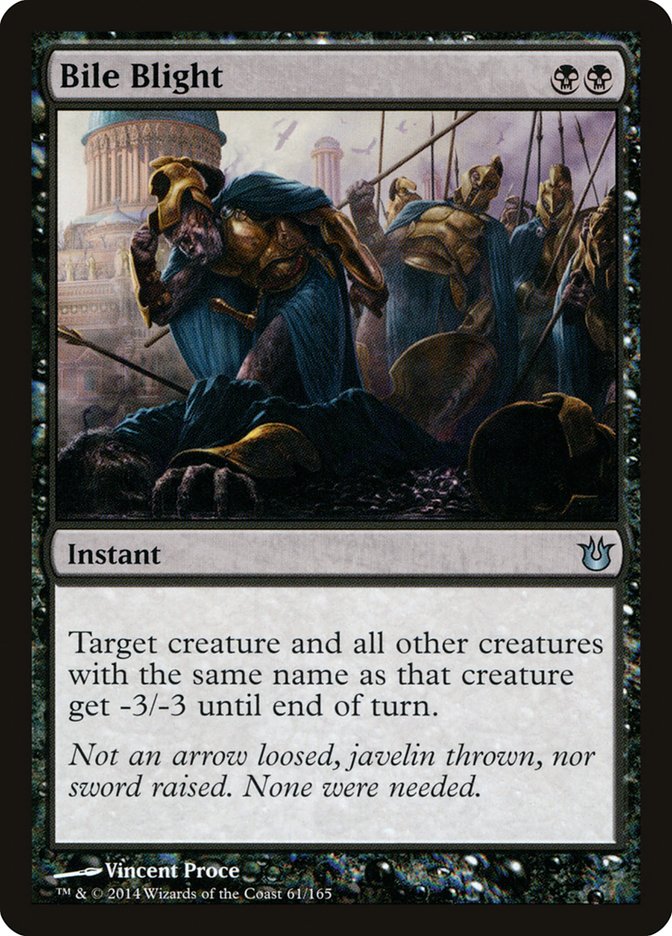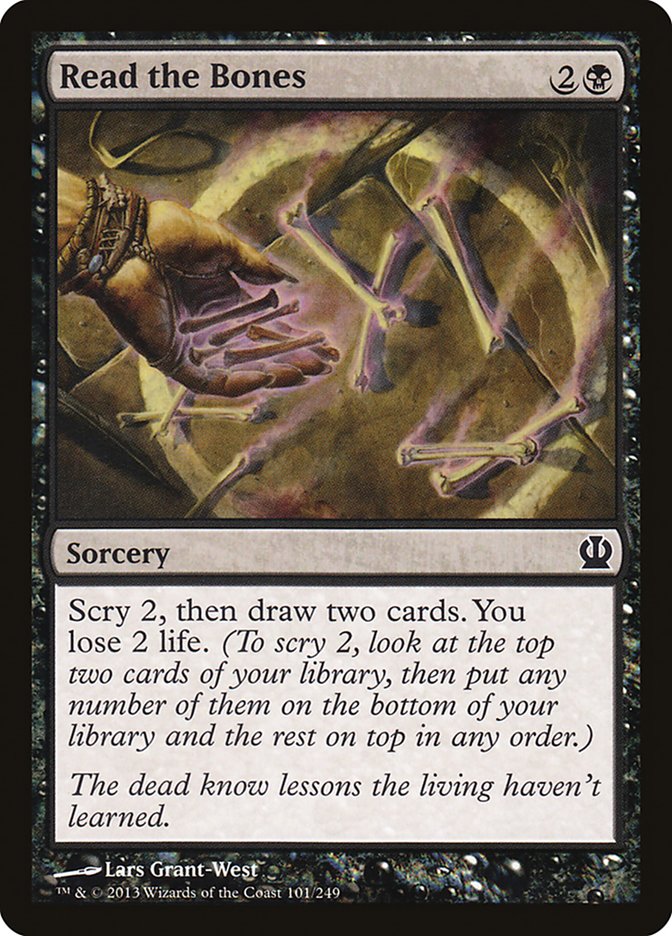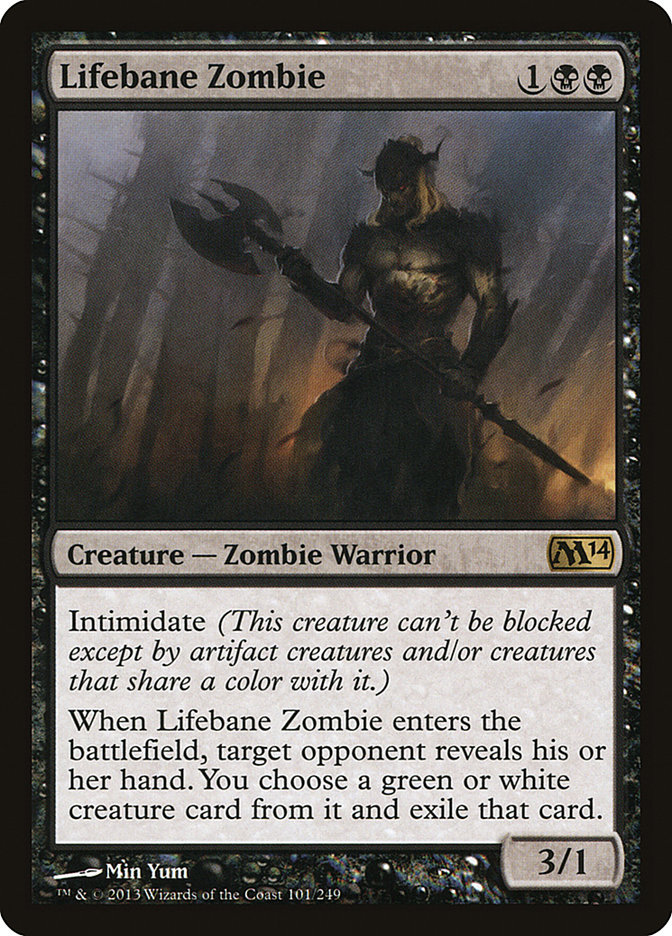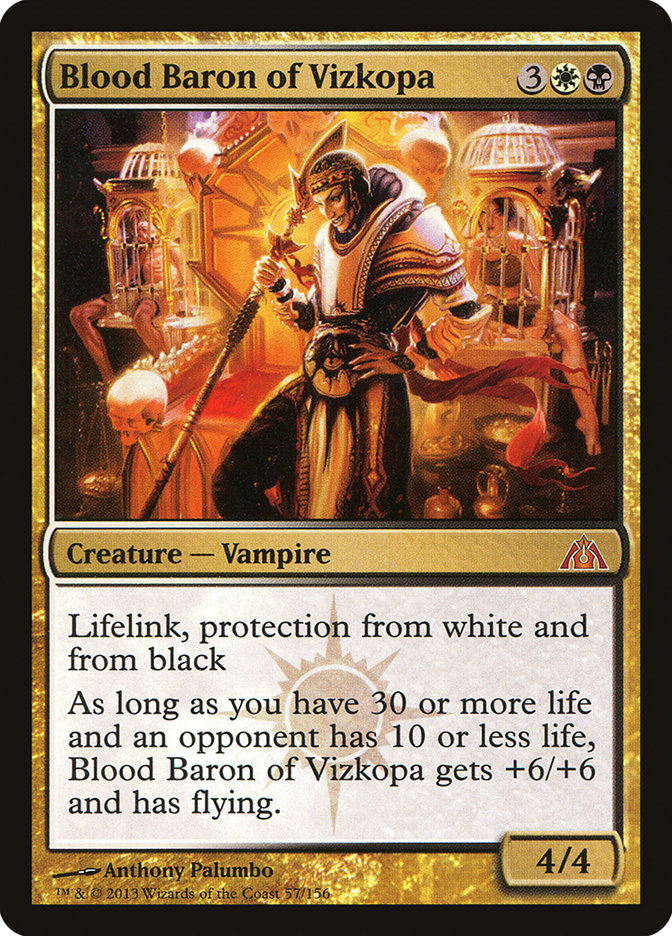Still batting 1.000.
Two StarCityGames.com Standard Opens, two Top 8s. The feeling is surreal. It still feels like I could wake up at any time to my alarm and find out that it’s Saturday morning again, only to be forced to get up early and drive to the event site to scrub out in a cruel mockery of the elaborate fantasy I’m living. But the conscious part of me knows that this is real life. This time hard work and preparation were rewarded. I proved that the first time wasn’t a fluke to a lot of people, but most importantly I proved it to myself.
It’s been five months since my last article, so I feel a quick (re)introduction is in order along with some relevant anecdotes from the last few months. My name is Harrison Hite, and I’m a pre-law major at the University of Puget Sound. I made Top 8 of the Standard Open in Seattle back in October with a deck that I put together five minutes before the event, which was the catalyst for me to begin taking the game more seriously than ever. In January the Magic club from the University of Puget Sound made the relatively quick trip north of the border for Grand Prix Vancouver, which was a very memorable event for all the wrong reasons.
Quick Aside: Misplay number one of Vancouver was letting one of the freshman club members find our accommodations for the tournament. When he told us he found a booking that would let us pay the Bitcoin equivalent of $30 per person to stay at what looked like a reasonable hotel twenty minutes from the event site, we should have had all kinds of alarm bells ringing in our heads, but instead we demonstrated our naivete by hopping aboard the train to Value Town.
When we showed up at the address on the booking, it was a regular house in a residential neighborhood, where a very polite Chinese man answered the door and began speaking at us very quickly in Mandarin. Fortunately, a member of our group happened to both understand and speak Mandarin just fluently enough to save us from spending the night in our car. It turns out that we had booked rooms in what was effectively a boarding house for new Chinese immigrants to stay at while they adjusted to life in Vancouver, but outside of the water not being potable the rooms were quite reasonable.
I started the Grand Prix out 7-0 with B/W Midrange, and the deck felt great. Unfortunately lady luck decided to leave my side after round 7, and I went 2-6 in the back end of the tournament to miss out on cash and my new year’s resolution: to obtain my first Pro Point. When Born of the Gods entered Standard, the deck got some significant upgrades in Bile Blight and Revoke Existence as well as a metagame shift in its favor, which made it a great choice for my second run at SCG glory.
Creatures (14)
Planeswalkers (2)
Lands (26)
Spells (18)

I truly feel as though I hit the nail on the head with this list, as it’s the result of extensive testing both with my playgroup and on Magic Online. Some of the choices are unorthodox, but I can honestly recommend this exact 75 to anyone looking to play a powerful deck with a lot of decision trees that rewards playskill and practice. That said, you need to know why I chose what I did, so I’d like to go over a few of the places where I deviated from established doctrine with this list.
Zero Plains
This isn’t the deck for basic Plains because the mana base simply can’t afford it. The deck is already playing four copies of Mutavault, which is the upper limit on nonblack mana sources in a deck that is skewed as heavily toward black as this one is. Now that Last Breath has become obsolete, there’s nothing in the maindeck that even requires white mana until turn 5, so I see no further reason to play what are effectively colorless mana sources just because they come into play untapped. 22 black sources are needed to make sure we can cast the next card on this list on time.
4 Bile Blight Maindeck
Of all the choices, this is probably the one that will require the most convincing argument because of how bad the card is perceived to be against the various flavors of Monsters and because it requires the previously discussed warping of the mana base. But the fact of the matter is that this is an extremely flexible all-purpose removal spell with built-in card advantage potential that deserves its slots.
Continuing with the theme of cards that reward playskill, Bile Blight’s utility scales extremely well as your knowledge of its various interactions with the rules increases. The easiest and most obvious example has to do with denying evolve triggers to Cloudfin Raptor against Mono-Blue Devotion. Here’s how it works:
Let’s say your opponent has a Cloudfin Raptor in play and casts something that would evolve it, such as a Nightveil Specter. Since evolve checks power and toughness on resolution, you can cast Bile Blight on Nightveil Specter in response to the evolve trigger, and its last known power and toughness will become -1/0 before it dies to state-based effects. The evolve trigger will then resolve using the last known information, and since -1/0 isn’t big enough to evolve anything, Cloudfin Raptor won’t evolve. This interaction came up in my very first game of the tournament, and I stabilized at two life precisely because of taking less damage from Cloudfin Raptor.
Another interaction that has come up in testing on Magic Online is responding to a Xenagos, God of Revels trigger targeting Courser of Kruphix. If you Bile Blight Courser in response, it becomes a -1/-1 that gets -1/-1 from the trigger resolving and dies to state-based effects. Between these sweet interactions and the obvious blowouts it can create against things like the triple identical one-drop start out of aggro and topdecking it when your Mono-Black Devotion opponent has just tapped out to make their third Pack Rat, it almost feels bad when it’s "just" an efficient one-for-one. Have I mentioned how many opponents I’ve made look foolish by casting this in response to Domri Rade fight activations? This card does it all and easily deserves four maindeck slots.
2 Underworld Connections & 2 Read the Bones
This is the best of both worlds. Drawing more than one Underworld Connections usually feels bad, and this deck can’t always afford to have one of its lands tied up in the production of card advantage. But at the same time Connections is an essential part of winning against both control and black devotion decks (including the mirror). Read the Bones is actually castable against aggro if you deal with pressing issues first, and scrying to make sure you draw gas and make a smooth transition to your late game is crucial. Four card advantage spells in the maindeck is the right number, ensuring that you draw one in a timely manner without drawing too many uncastables.
2/2 Maindeck/Sideboard Split On Lifebane Zombie
It amuses me how much better than the rest of the cycle this card is. Getting to see your opponent’s hand is always relevant, but there’s enough Mono-Black Devotion running around that it’s not something you can afford to draw multiple copies of in game 1 on a regular basis. That said, its sheer power against green creature decks as well as its utility in being your only maindeck answer to Blood Baron of Vizkopa besides Elspeth, Sun’s Champion both warrant its inclusion, and how could you not want more color-hosing goodness out of the sideboard?
4 Blood Baron of Vizkopa Maindeck
Between rounds I listened to the song "Make It Bun Dem" by Skrillex featuring Damian "Jr. Gong" Marley on repeat, and every time I attacked with this card I heard Jr. Gong singing "rude boy bass, smash up the place."
I don’t see the need for a round-by-round breakdown of the tournament, but I will say that I certainly caught a few breaks en route to the Top 8, not the least of which were the following:
- Saying "YOLO" and moving in on my turn 2 Pack Rat against Esper Control in game 1 of round 2. He had neither the Supreme Verdict nor the Detention Sphere to punish me.
- Beating Dave Doberne playing R/W Burn because his hand got clogged up with more copies of Stormbreath Dragon than he could cast in a timely manner.
- Topdecking well to get the best of Peter Sundholm in round 7.
- My round 9 opponent having all kinds of land and spell distribution problems.
I had an incredibly motivating phone conversation with Matthias Hunt before the quarterfinals, where he told me that since it was my second Top 8 I couldn’t be happy with simply having made it anymore. I had to keep my eyes on the prize.
I kept this in mind in game 2 of the quarterfinals when I intentionally began holding all of my land drops to win a game I was otherwise losing when I drew Pack Rat on the last possible turn. This was followed by a mulligan to five in game 3 working out when I drew Underworld Connections on turn 3 and got the game to a point where my opponent had an active Erebos, God of the Dead; Whip of Erebos; and Herald of Torment and I was low on life but with two copies of Blood Baron of Vizkopa in play.
I Bile Blighted his Herald as soon as he went to combat to turn off his Erebos and ensure my survival for the turn and paid most of my remaining life to my two Underworld Connections in a desperate search for a Revoke Existence, which I finally found and cast before sending the rude boys in to smash up the place and take me to the semis the following morning.
The semis were unfortunate for Mitch in that his deck refused to give him what he needed to win the game. Between mulligans and far too many lands for an aggro deck, he wasn’t really in either game.
My only controversial decision in the finals was choosing to cast a Read the Bones in game 1 that may have been the difference between me stabilizing with Blood Baron of Vizkopa and dying, but I’ll have to go back and watch the replay before the jury comes in on that. Neil Hartman was a good opponent and a deserving champion, and I knew that I was a huge underdog in the matchup from testing. Congratulations to him, as well as to all the other Top 8 competitors. I also feel that a few shout outs are in order to some of my good friends:
- John Giltner: For your first major event, 6-4 is a great record, and I was very appreciative of your company between rounds throughout the day.
- Daysean Innocenti: For a sixteen-year-old kid, you have the heart of a champion. You beat Martin Goldman-Kirst and Jesse Hampton down the stretch, and even though your win-and-in match didn’t go your way, keep plugging away and you’ll get there.
- Caleb Myers: You are amazing for going to the lengths that you do to be Magic dad. Part of the reason I do so well at these events is because I’m always fed and hydrated due to your ceaseless efforts on the sidelines.
- Greg Peloquin: You might be a huge troll, but when the chips are down, you’re also a great friend. Liz is a very lucky woman.
- The rest of the Puget Sound Magic crew: You know what you do for me, and I appreciate it.
Before I go blasting off again (public service announcement: Pokemon is streaming on Netflix now—run [don’t walk] to relive your childhood!), I want to quickly weigh in on the topic du jour: Crackgate. Aspects of this have been beaten to death, but I want to draw attention to the fact that I’ve been putting my money where my mouth is by showing up in (at the bare minimum) a collared shirt and dress jeans to virtually every Magic event for at least the past year. I dress for success, and I’ve enjoyed success. I suggest you do the same. In the meantime, stay classy, and hopefully I’ll get a chance to take it downtown to Crown Town at the SCG Invitational.





